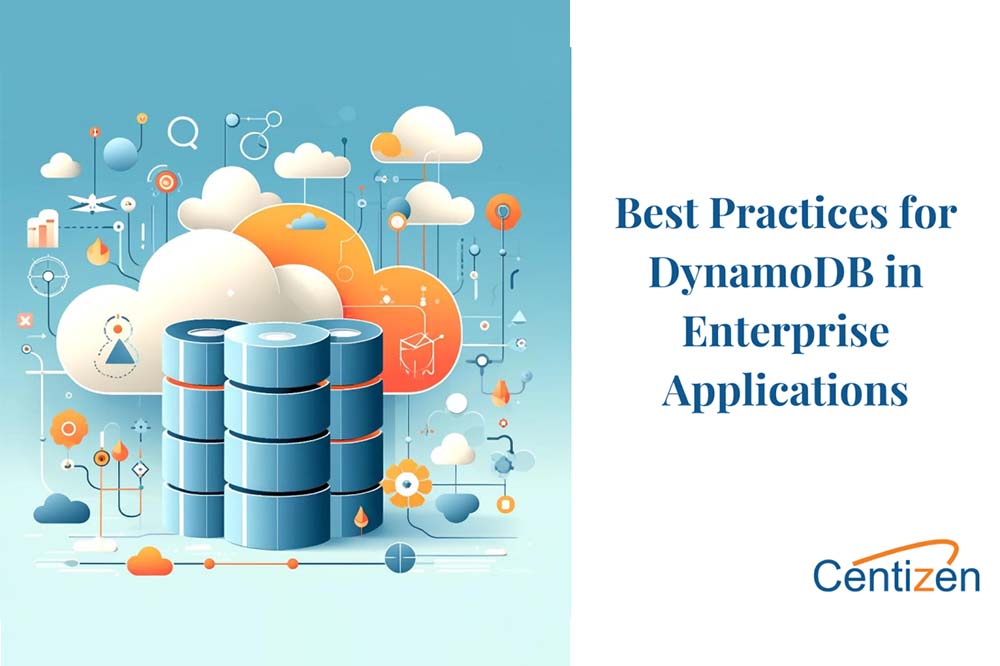Best Practices for Using DynamoDB in Enterprise-Level Applications

DynamoDB, a fully managed NoSQL database provided by AWS, offers scalability, performance, and high availability, making it an ideal choice for enterprise-level applications. However, to leverage its full potential, it’s essential to follow best practices that ensure optimal performance, cost-efficiency, and maintainability. This blog post will delve into these best practices, guiding you on how to architect and optimize your DynamoDB usage for enterprise-scale applications.
Best practices for architecting and optimizing DynamoDB for enterprise applications
1. Understand your access patterns
Before designing your DynamoDB tables, it’s crucial to understand your application’s access patterns. This means knowing how data will be queried, accessed, and updated. DynamoDB’s performance is highly dependent on how well you design your tables and indexes according to your access patterns.
- Identify primary access patterns: Determine the primary operations (e.g., read, write, update, delete) and the frequency of each.
- Model for queries: Design your tables to support the most frequent and important queries efficiently. This might involve denormalizing data or using composite primary keys.
2. Choose the right primary key
DynamoDB supports two types of primary keys:
- Partition key: A simple primary key consisting of a single attribute.
- Composite key: A partition key combined with a sort key, allowing for more complex querying capabilities.
For enterprise applications, a composite key is often more suitable as it allows for efficient querying and access to related data.
3. Use secondary indexes wisely
Secondary indexes allow you to query on attributes other than the primary key.
- Global Secondary Indexes (GSI): These can be used to query on non-primary key attributes and can be created at any time.
- Local Secondary Indexes (LSI): These are defined at the time of table creation and allow querying on attributes within the same partition key.
Use GSIs and LSIs to support additional query patterns without duplicating data.
4. Optimize for write operations
To ensure efficient write operations:
- Batch writes: Use BatchWriteItem to perform bulk write operations efficiently.
- Provisioned throughput: Set appropriate read/write capacity units (RCUs/WCUs) to handle peak loads. Consider using auto-scaling to adjust capacity based on traffic.
- Avoid hot partitions: Distribute your workload evenly across partitions to avoid bottlenecks. This can be achieved by designing a partition key with high cardinality.
5. Optimize for read operations
Efficient read operations are critical for performance:
- Use projection expressions: Limit the attributes returned in a query or scan to only those required.
- Consistent vs. eventual consistency: Choose consistent reads only when necessary, as they consume more RCUs. Eventual consistency is often sufficient and more cost-effective.
- DAX (DynamoDB Accelerator): Use DAX to cache read-intensive workloads and reduce read latency.
6. Monitor and optimize costs
DynamoDB can be cost-effective, but costs can escalate if not managed properly:
- Monitor usage: Use CloudWatch to monitor read/write capacity, latency, and errors. Set up alarms for unusual patterns.
- Optimize data storage: Use item-level TTL (Time to Live) to automatically delete items that are no longer needed.
- On-demand vs. provisioned capacity: Choose on-demand capacity for unpredictable workloads and provisioned capacity for steady-state workloads. Use auto-scaling to adjust capacity dynamically.
7. Data modeling best practices
Effective data modeling in DynamoDB involves:
- Denormalization: Store related data together to reduce the need for complex joins.
- Single-table design: Use a single table to store various types of entities, leveraging composite keys and secondary indexes to access different entity types.
- Item collections: Group related items using the same partition key to enable efficient querying of related data.
8. Leverage transactions for atomic operations
For applications requiring ACID (Atomic, Consistent, Isolated, Durable) properties:
- DynamoDB transactions: Use TransactWriteItems and TransactGetItems to perform atomic operations across multiple items and tables.
9. Implement security best practices
Ensure your data is secure:
- IAM policies: Use fine-grained access control to restrict access to specific tables and operations.
- Encryption: Enable server-side encryption for your tables using AWS-managed or customer-managed keys.
- VPC endpoints: Use VPC endpoints to access DynamoDB without traversing the public internet, enhancing security.
10. Regular backups and recovery
Data protection is critical:
- On-demand backups: Regularly back up your tables using on-demand backups.
- Point-in-time recovery (PITR): Enable PITR to restore data to any point within the last 35 days.
Conclusion
DynamoDB’s flexibility and scalability make it a powerful choice for enterprise-level applications. By understanding your access patterns, choosing the right primary keys, optimizing read/write operations, managing costs, and following security best practices, you can build robust, high-performance applications that scale seamlessly with your business needs. Implement these best practices to ensure your DynamoDB deployment is efficient, secure, and cost-effective.
Explore Centizen Inc’s comprehensive staffing solutions, custom software development and innovative software offerings, including ZenBasket and Zenyo, to elevate your business operations and growth.
Centizen
A Leading IT Staffing, Custom Software and SaaS Product Development company founded in 2003. We offer a wide range of scalable, innovative IT Staffing and Software Development Solutions.
Contact Us
USA: +1 (971) 420-1700
Canada: +1 (971) 420-1700
India: +91 63807-80156
Email: contact@centizen.com
Our Services
Products
Contact Us
USA: +1 (971) 420-1700
Canada: +1 (971) 420-1700
India: +91 63807-80156
Email: contact@centizen.com






